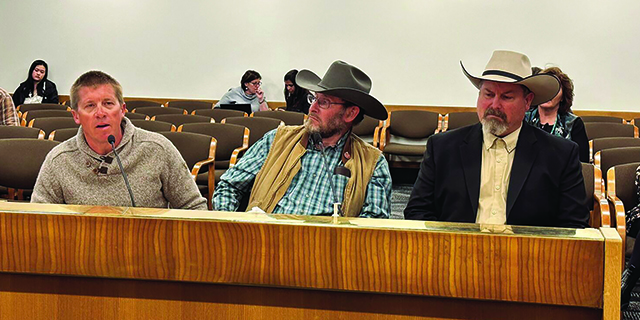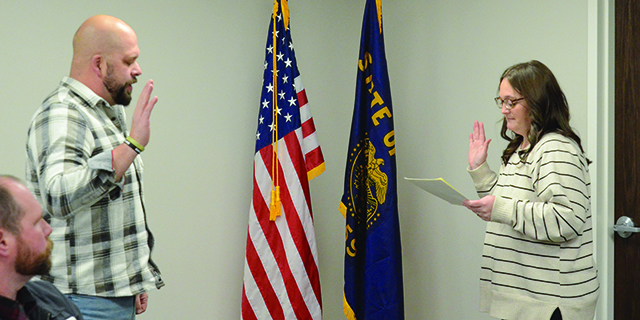MAIN STREET: Football a strange American obsession
Published 4:00 pm Tuesday, January 15, 2013

- Wandschneider mug
This weeks papers brought news from the examiners of football great Junior Seaus brain tissue. In a shock to the football world, the popular Seau committed suicide at age 43 and, in wake of several similar events involving former pro footballers, his family asked that his brain tissue be examined. The results of multiple blind tests examiners were given several samples and did not know which ones were Seaus affirmed that he had chronic traumatic encephalopathy, a degenerative brain disease widely connected to athletes who have absorbed frequent blows to the head.
Seau and I played football on the same field for the same school, Oceanside High School my playing and OHS class time almost 30 years ahead of his and I learned from reading tributes that he played at least one game, a Southern California all-star affair, for my old coach, who is himself a legend in California football, Herb Meyer.
Trending
Beyond that, there are no comparisons. The Oceanside of 1960 is unrecognizable now. More importantly, the football of today at big high schools, colleges, and especially in the pro game is not the same sport. Herb Meyer had one assistant and weightlifting and off-season training were rare. Enhanced training, scouting and drugs? mean that todays players are quicker and bigger, bigger by magnitudes. I played high school center at 167 pounds; Seau played quarterback and linebacker at 220 and kept growing for college and pro ball. College lines now routinely feature 300-pounders, and high school lines at big city schools average 250. Finally, football is now a highly specialized game, with specialty coaches, kickers who only kick, and 300-pounders running on and off the field depending on down and field position.
A note here: old friend Leonard Younce, who starred for Oregon State in the 40s and played several seasons as a 60-minute man for the New York Giants, weighed 212 as a pro linebacker and offensive lineman. Leonard coached a year at Joseph High, and I remember him saying that he and his teams could have played with todays pro players with the reversal of one rule free substitution.
So the game has changed, and so has medical science. It might be that serious and cumulative head injuries were always there in bigger numbers than we realized, and that medical science had just not figured it out. Or it could be that the science was carefully covered up by the big wheels in an increasingly big-business sport.
But here we are in 2013, and current and former pro footballers banging their larger bodies at each other from peewee football to big paychecks are exploding in violent rages at home, suffering from severe depression, and committing suicide at alarming rates. And, in another study, suffering from Alzheimers and Lou Gehrigs Disease at abnormal rates.
At the same time, we are watching football and paying higher prices to do so at record rates. It is a strange obsession, and I confess that I am not entirely free of it, I can stay away and maintain critical objectivity throughout the year, but, like most of America, as the year winds down and the calendar rolls over, I am as likely as the next guy and many a woman to be tuned in to a college bowl or professional football game. Why?
We like the extraordinary talent, the speed and coordination of individual players and of teams, the drama of individual games, league and national championships. There is drama too with the lives and careers of individual coaches and players and the rivalries among them.
Trending
These likes are carefully nurtured by the marketing departments of schools, teams, and the products they sell with everything from stadium names to Super Bowl halftime ads. Schools use football money to fund other sports, and TV appearances for general student recruitment. College football holds alumni together and nurtures their gifts; pro football holds cities together. Both come with huge retinues of direct and indirect merchandisers, media specialists, and attendants from parking garage to sideline. The economies are huge.
But the biggest reasons for our addiction might be that we have become a nation of spectators and instant gratification addicts. Fans crave the adrenaline high at the stadium or sports bar; players crave the big play, fame, and paycheck. Seaus former teammates said they might think about the science later; they have games to prepare for now. Last weekend, when RGriffin3, the Redskins rookie phenom, played hurt, his coach and fans were looking for todays victory with little regard to his or their own futures.
Scenes from Spartacus raving crowds and doomed gladiators come to mind.
Main Street columnist Rich Wandschneider directs the Alvin M. and Betty Josephy Library of Western History and Culture housed at the Josephy Center for Arts and Culture, located in Joseph.









